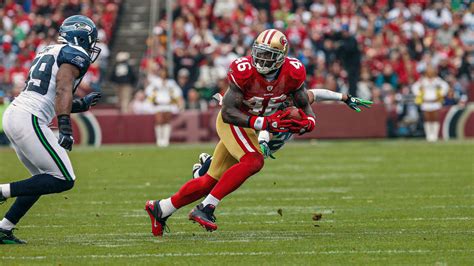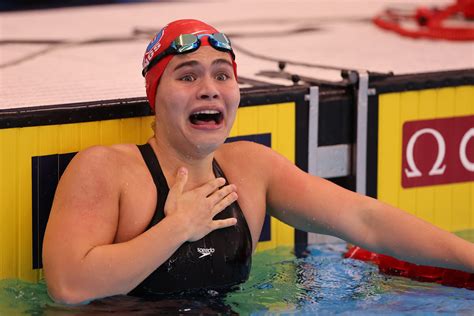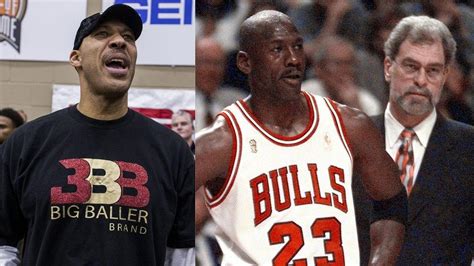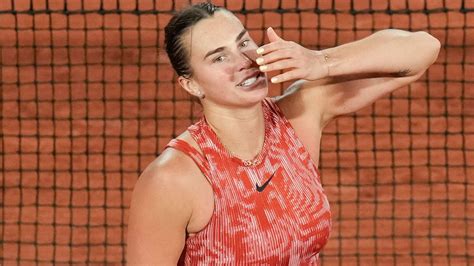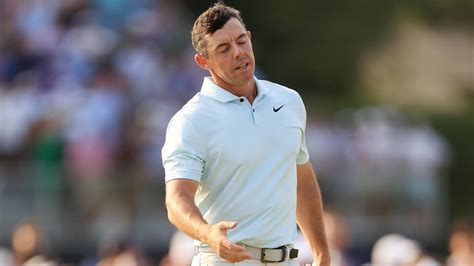
Rory McIlroy’s participation in the upcoming U.S. Open at Pinehurst No. 2 is now uncertain, following his admission that he is “not feeling 100%” heading into the major championship. The four-time major winner expressed concerns about his physical and mental state after a grueling stretch of golf, raising questions about his readiness to contend for his first major title since 2014.
McIlroy, who finished T15 at the Memorial Tournament presented by Workday on Sunday, revealed the toll the demanding schedule has taken on him. “I’m not feeling 100% going into Pinehurst,” McIlroy said. “But I’m going to try my best to get myself in as good a shape as possible to be ready to go next week.” This admission casts a shadow over his chances at Pinehurst, where he will seek to end his decade-long major drought.
McIlroy’s remarks came after a mixed performance at Muirfield Village. While he showcased moments of brilliance, particularly during the middle rounds, he also struggled with consistency, a factor that has plagued him in major championships in recent years. The physical and mental strain of competing at the highest level week after week has clearly taken its toll, leading to his candid assessment of his current condition.
“I think the last few weeks have been a bit of a grind,” McIlroy admitted. “I’m just trying to get through it and get to the end of this little run here and assess where I’m at and what I need to do to get ready for the U.S. Open.” This statement indicates that McIlroy recognizes the need for a period of recovery and preparation before the U.S. Open, suggesting he might adjust his training and practice schedule to optimize his chances of success.
The U.S. Open, known for its challenging course conditions and demanding setup, requires players to be at their peak both physically and mentally. McIlroy’s uncertainty about his condition raises concerns about his ability to withstand the pressure and navigate the complexities of Pinehurst No. 2. The course, with its undulating greens, strategic bunkering, and native wiregrass, will test every aspect of a player’s game.
McIlroy’s struggles in major championships over the past decade have been well-documented. Despite consistently being among the top contenders, he has been unable to close the deal and secure another major victory. The pressure of expectations, coupled with the inherent challenges of major championship golf, has often proven to be a formidable obstacle.
His last major win came at the 2014 PGA Championship at Valhalla. Since then, he has had numerous close calls, including several top-10 finishes, but has ultimately fallen short. The weight of this drought has undoubtedly added to the mental burden he carries into each major, potentially exacerbating the effects of fatigue and physical discomfort.
The U.S. Open at Pinehurst No. 2 presents a unique set of challenges. The course, recently restored to its original design, emphasizes strategic play and precision. Players must carefully consider their shot selections and manage their way around the course, avoiding costly mistakes. The unforgiving nature of the course will punish any lack of focus or physical stamina.
McIlroy’s comments suggest that he is aware of these challenges and is taking steps to address them. However, the limited time between the Memorial Tournament and the U.S. Open leaves him with a narrow window to recover and prepare. His ability to effectively manage his energy levels and mental focus will be crucial to his success.
The world of golf will be closely watching McIlroy’s progress in the days leading up to the U.S. Open. His performance at Pinehurst will not only determine his chances of winning his fifth major championship but also provide insights into his ability to overcome the physical and mental hurdles that have hindered him in recent years. His participation itself remains in question depending on his response to treatment and rest.
Rory McIlroy’s situation highlights the intense demands placed on professional golfers, particularly those competing at the highest level. The constant travel, rigorous training schedules, and pressure to perform can take a significant toll on both their physical and mental well-being. McIlroy’s candid admission underscores the importance of prioritizing self-care and recognizing the need for rest and recovery.
Many golf analysts have weighed in on McIlroy’s current form and his prospects at the U.S. Open. Some believe that his recent struggles are a temporary setback and that he has the talent and experience to contend at Pinehurst. Others are more cautious, suggesting that his physical and mental fatigue could be a significant disadvantage.
“Rory is one of the most talented players in the world, and he’s certainly capable of winning the U.S. Open,” said renowned golf analyst Brandel Chamblee. “But he needs to be at his best, both physically and mentally, to have a chance. If he’s not feeling 100%, it’s going to be tough for him to compete against the other top players.”
Other factors that could influence McIlroy’s performance at the U.S. Open include the weather conditions, the course setup, and the strength of the field. Pinehurst No. 2 is known for its unpredictable weather, which can significantly impact scoring. The USGA, which conducts the U.S. Open, is also known for setting up the course in a challenging manner, with narrow fairways, thick rough, and fast greens.
The field at the U.S. Open will be comprised of the top players in the world, including defending champion Wyndham Clark, world number one Scottie Scheffler, and other major champions such as Jon Rahm, Brooks Koepka, and Jordan Spieth. McIlroy will face stiff competition from these players, all of whom are eager to add another major title to their resumes.
McIlroy’s mental game has been a subject of much discussion in recent years. While he possesses immense talent and skill, he has sometimes struggled to maintain his composure under pressure. This has been particularly evident in major championships, where he has often made costly mistakes in crucial moments.
“Rory’s mental game is just as important as his physical game,” said sports psychologist Dr. Bob Rotella. “He needs to be able to stay calm and focused, even when things aren’t going his way. If he can do that, he’ll have a much better chance of winning majors.”
McIlroy has worked with various sports psychologists over the years to improve his mental game. He has also implemented strategies to manage his emotions and maintain a positive attitude on the course. However, the pressure of competing for major championships can be overwhelming, and it remains to be seen whether he can consistently perform at his best in these high-stakes situations.
The U.S. Open is one of the most prestigious and challenging tournaments in golf. It is known for its demanding course conditions, intense competition, and dramatic finishes. Winning the U.S. Open is a career-defining achievement for any golfer, and McIlroy is eager to add his name to the list of champions.
His best finish at the U.S. Open was in 2011 when he won the tournament at Congressional Country Club by a record-setting eight strokes. He has had several other solid performances at the U.S. Open, including a T9 finish in 2015 and a T5 finish in 2019. However, he has not been able to replicate his success from 2011, and he is determined to contend for the title once again.
McIlroy’s uncertainty about his condition adds another layer of intrigue to the U.S. Open. His ability to overcome his physical and mental challenges will be a key factor in determining his success at Pinehurst. Whether he can defy the odds and capture his fifth major championship remains to be seen, but his journey will undoubtedly be one of the most compelling storylines of the tournament.
His statement raises questions about whether he will withdraw from the tournament, although that seems unlikely at this stage. More likely, he will adjust his preparation and practice schedule to conserve energy and minimize strain on his body. He might also consult with his medical team to explore options for managing his discomfort and fatigue.
The situation also highlights the importance of managing schedules and prioritizing rest and recovery for professional athletes. The demands of modern golf are immense, and players must carefully balance their competitive ambitions with their physical and mental well-being. McIlroy’s experience serves as a reminder that even the most talented athletes are not immune to the effects of fatigue and pressure.
Looking beyond the U.S. Open, McIlroy has a busy schedule ahead, including the Open Championship at Royal Troon in July and the Ryder Cup in September. His performance in these events will be crucial for both his individual career and his contributions to the European team. Maintaining his health and fitness will be essential for him to achieve his goals in the second half of the season.
The golf world will be watching closely to see how McIlroy responds to this challenge. His ability to overcome adversity and maintain his focus under pressure will be a testament to his resilience and determination. Whether he ultimately triumphs at the U.S. Open or falls short, his journey will undoubtedly be a compelling and inspiring one.
The financial implications of McIlroy’s performance are also significant. Major championships offer substantial prize money, and a victory at the U.S. Open would significantly boost his earnings for the year. Moreover, his success on the course can enhance his endorsement deals and sponsorships, further increasing his financial security.
Beyond the financial rewards, winning a major championship carries immense prestige and recognition. It solidifies a golfer’s legacy and cements their place in the history of the sport. McIlroy is undoubtedly driven by a desire to add to his major championship tally and secure his place among the game’s all-time greats.
His preparation for the U.S. Open will likely involve a combination of rest, treatment, and light practice. He might also spend time visualizing success and mentally preparing for the challenges of Pinehurst No. 2. His team of coaches, trainers, and medical professionals will play a crucial role in helping him to optimize his condition and performance.
The support of his family and friends will also be invaluable. McIlroy has always been close to his family, and their encouragement and understanding can provide him with the emotional strength he needs to overcome adversity. Their presence at the U.S. Open could be a source of inspiration and motivation for him.
Ultimately, McIlroy’s success at the U.S. Open will depend on his ability to manage his physical and mental state, execute his game plan effectively, and perform under pressure. He has the talent and experience to win, but he will need to overcome significant challenges to achieve his goal. His journey will be a testament to his resilience, determination, and unwavering pursuit of excellence.
The golf community is hopeful that McIlroy will be able to overcome his current challenges and compete at his best at the U.S. Open. His presence adds excitement and intrigue to the tournament, and his fans are eager to see him contend for the title. His story is a reminder of the human side of professional sports, where even the most talented athletes face physical and mental hurdles.
As the U.S. Open approaches, all eyes will be on Rory McIlroy. His journey will be a compelling narrative of resilience, determination, and the pursuit of excellence. Whether he ultimately triumphs or falls short, his participation will undoubtedly add drama and intrigue to one of the most prestigious tournaments in golf. The anticipation builds as fans await to see if he can defy the odds and capture his fifth major championship, despite the challenges he faces.
The legacy of Pinehurst No. 2 adds another layer of context to McIlroy’s situation. The course, steeped in history, has hosted numerous U.S. Opens, each with its own memorable moments and dramatic finishes. The course’s unique character, with its crowned greens and sandy waste areas, demands a strategic and precise approach. McIlroy’s ability to adapt to these conditions will be crucial to his success.
The mental fortitude required to navigate Pinehurst No. 2 is immense. The course can be incredibly penal, and even the slightest mistake can be costly. McIlroy’s ability to remain patient, focused, and resilient will be tested throughout the tournament. His past experiences in major championships, both positive and negative, will undoubtedly shape his approach to this challenge.
The U.S. Open often showcases the best in golf course architecture, and Pinehurst No. 2 is no exception. Designed by Donald Ross, the course is a masterpiece of strategic design, rewarding thoughtful play and punishing recklessness. McIlroy’s understanding of course management and his ability to execute his shots with precision will be critical factors in his performance.
The evolution of McIlroy’s game over the years has been a fascinating study. He has consistently worked to improve his weaknesses and refine his strengths. His dedication to his craft is evident in his unwavering pursuit of excellence. His current challenge at the U.S. Open represents another opportunity for him to demonstrate his growth and maturity as a player.
The impact of technology on golf is also relevant to McIlroy’s situation. Modern equipment and data analysis have transformed the game, allowing players to optimize their performance in ways that were previously unimaginable. McIlroy’s use of technology, both on and off the course, has undoubtedly contributed to his success.
The role of coaching in McIlroy’s career cannot be overstated. He has worked with some of the best coaches in the world, who have helped him to refine his technique and develop his mental game. His current coaching team will play a crucial role in helping him to prepare for the U.S. Open and manage his physical and mental state.
The global appeal of Rory McIlroy is undeniable. He is a charismatic and engaging figure who has captured the hearts of golf fans around the world. His presence at the U.S. Open adds to the tournament’s excitement and generates significant media attention. His influence on the game extends beyond his playing ability, as he serves as an inspiration to aspiring golfers of all ages.
His charitable work and his commitment to giving back to the community further enhance his reputation. He has supported numerous causes and has used his platform to make a positive impact on the world. His dedication to philanthropy is a testament to his character and his values.
Ultimately, Rory McIlroy’s journey at the U.S. Open is a story of resilience, determination, and the pursuit of excellence. He faces significant challenges, but he possesses the talent, experience, and mental fortitude to overcome them. His performance will undoubtedly be a compelling and inspiring one, regardless of the outcome. The world of golf will be watching closely as he navigates this latest chapter in his remarkable career. He’s made multiple changes to his equipment this year as well. It remains to be seen if he has finally settled on what works best for him, especially in pressure situations.
Frequently Asked Questions (FAQ)
1. What is the main concern regarding Rory McIlroy’s participation in the U.S. Open?
The main concern is that McIlroy stated he is “not feeling 100%” heading into the U.S. Open, raising doubts about his physical and mental readiness to compete at his best. This follows a demanding stretch of tournaments, and he admitted to feeling “a bit of a grind” in recent weeks.
2. What did McIlroy say about his condition and preparation for the U.S. Open?
McIlroy stated, “I’m not feeling 100% going into Pinehurst,” and added, “I’m going to try my best to get myself in as good a shape as possible to be ready to go next week.” He also mentioned needing to “assess where I’m at and what I need to do to get ready for the U.S. Open.”
3. Where and when is the U.S. Open being held this year?
The U.S. Open is being held at Pinehurst No. 2, a challenging course known for its unique design and demanding conditions. The tournament is scheduled for the following week after the Memorial Tournament.
4. When was the last time Rory McIlroy won a major championship?
Rory McIlroy’s last major championship victory was at the 2014 PGA Championship, marking a decade-long major drought he is looking to end.
5. What are some of the specific challenges that Pinehurst No. 2 presents to golfers?
Pinehurst No. 2 is known for its undulating greens, strategic bunkering, and native wiregrass. The course demands precision, strategic play, and the ability to manage mental and physical fatigue due to its challenging layout and unforgiving nature.
6. Besides physical condition, what other aspects of McIlroy’s game are being scrutinized?
McIlroy’s mental game has been a significant focus, particularly his ability to maintain composure and perform under pressure in major championships. His past struggles with closing out tournaments and avoiding costly mistakes in crucial moments are factors being considered.
7. Who are some of the other top players expected to compete at the U.S. Open?
The field will include top players such as defending champion Wyndham Clark, world number one Scottie Scheffler, and other major champions like Jon Rahm, Brooks Koepka, and Jordan Spieth.
8. How might McIlroy adjust his preparation for the U.S. Open given his current condition?
McIlroy might prioritize rest and recovery, adjust his practice schedule to conserve energy, consult with his medical team for treatment options, and focus on mental preparation and visualization.
9. What role do sports psychologists play in helping golfers like McIlroy prepare for major championships?
Sports psychologists help golfers manage their emotions, maintain focus, develop mental strategies for handling pressure, and build confidence. They also assist in visualizing success and creating positive mental routines.
10. What impact does weather have on the U.S. Open, and how might it affect McIlroy’s performance?
The U.S. Open is known for unpredictable weather, which can significantly impact scoring. Wind, rain, and extreme temperatures can make the course even more challenging and test players’ adaptability and resilience.
11. Beyond prize money, what other incentives drive golfers to win major championships?
Winning a major championship brings immense prestige, solidifies a golfer’s legacy, enhances endorsement deals, and cements their place in the history of the sport. It’s a career-defining achievement that signifies the pinnacle of success in golf.
12. How is McIlroy managing his schedule in the latter half of the season after the U.S. Open?
McIlroy has a busy schedule ahead, including the Open Championship at Royal Troon in July and the Ryder Cup in September. Maintaining his health and fitness will be essential for him to achieve his goals and contribute to the European team.
13. How does the design of Pinehurst No. 2 emphasize strategic play and precision?
Pinehurst No. 2 is designed with crowned greens, sandy waste areas, and strategic bunkering that reward thoughtful play and punish recklessness. The course demands precise shot execution, course management, and a deep understanding of angles and distances.
14. What is the historical significance of Pinehurst No. 2 in hosting the U.S. Open?
Pinehurst No. 2 is steeped in history, having hosted numerous U.S. Opens, each with its own memorable moments and dramatic finishes. Its unique character and challenging conditions have made it a legendary venue in the world of golf.
15. What kind of impact does Rory McIlroy have on golf from a global perspective?
Rory McIlroy has a global appeal as a charismatic and engaging figure. He is a major draw for fans, generates significant media attention, and inspires aspiring golfers worldwide. His charitable work and commitment to giving back to the community further enhance his reputation.
16. Can you expand on the concept of the “inverted pyramid” structure in journalistic writing and how it is applied to this article?
The inverted pyramid structure is a method of organizing news articles where the most important information is presented first, followed by supporting details in descending order of importance. This ensures that readers quickly grasp the key facts even if they only read the beginning of the article. In this rewritten article, the opening paragraph (lead) summarizes McIlroy’s U.S. Open doubt due to his physical and mental condition. Subsequent paragraphs then provide more details, quotes, and context, such as his performance at the Memorial Tournament, analysis from golf experts, and the challenges of Pinehurst No. 2. The FAQ section at the end further reinforces the key information in a concise question-and-answer format. This structure allows readers to efficiently understand the essential information about McIlroy’s situation, even if they don’t read the entire article.
17. What role does Brandel Chamblee play in golf analysis, and why is his quote included in the article?
Brandel Chamblee is a renowned golf analyst known for his insightful and often critical commentary on players and their performance. His quote is included to provide expert opinion and context on McIlroy’s current form and his prospects at the U.S. Open. Chamblee’s analysis adds credibility and depth to the article by presenting a professional perspective on the challenges McIlroy faces and the importance of being at his best both physically and mentally. His voice is respected in the golf world, which enhances the article’s overall authority.
18. What is the significance of Rory McIlroy working with sports psychologists, and what specific strategies do they employ to enhance his mental game?
Rory McIlroy’s collaboration with sports psychologists is significant because it underscores the critical role of mental strength in professional golf, especially in major championships. These experts employ several strategies to enhance his mental game:
- Emotional Management: Helping McIlroy regulate his emotions under pressure, preventing anxiety or frustration from affecting his performance.
- Focus and Concentration: Training him to maintain focus and concentration, especially during crucial moments, using techniques like mindfulness or visualization.
- Positive Self-Talk: Encouraging positive self-talk to build confidence and resilience, helping him to overcome negative thoughts or setbacks.
- Goal Setting: Assisting him in setting realistic and achievable goals, breaking down the major championship into smaller, manageable steps.
- Visualization: Guiding him in visualizing successful outcomes, mentally rehearsing shots and scenarios to build confidence and prepare for various challenges.
- Pre-Performance Routines: Developing pre-performance routines to create consistency and predictability, helping him to enter a state of flow and optimal performance.
- Stress Management: Teaching stress management techniques, such as deep breathing or progressive muscle relaxation, to reduce tension and anxiety.
19. Explain how the physical demands of professional golf, specifically the travel and rigorous training, contribute to McIlroy’s current “not feeling 100%” condition?
The physical demands of professional golf are incredibly taxing, especially at the highest level. Rory McIlroy’s “not feeling 100%” condition is likely a result of the cumulative effect of:
- Constant Travel: Professional golfers travel extensively, often across different time zones and continents, leading to jet lag, sleep deprivation, and disrupted routines.
- Rigorous Training: Training schedules are intense, involving hours of practice on the range, course, and gym, leading to muscle fatigue, soreness, and increased risk of injury.
- Competitive Pressure: The constant pressure to perform at a high level week after week creates mental and emotional stress, contributing to overall fatigue and burnout.
- Course Conditions: Golf courses vary widely in terrain and conditions, requiring golfers to adapt and exert physical effort to navigate slopes, bunkers, and uneven lies.
- Climate Variations: Playing in different climates, from extreme heat to cold and wet conditions, can further strain the body and increase the risk of illness or injury.
- Limited Recovery Time: With a packed tournament schedule, golfers often have limited time for proper rest and recovery, leading to accumulated fatigue and diminished performance.
All these factors combine to create a demanding environment that can take a significant toll on a golfer’s physical and mental well-being, contributing to McIlroy’s current state.
20. How could equipment changes potentially be impacting McIlroy’s play and adding to his current struggles?
Equipment changes can significantly impact a golfer’s play, and if not properly integrated, they can contribute to struggles. Potential impacts include:
- Inconsistency: Changing clubs can lead to inconsistency in shots, especially if the new equipment has different weight, balance, or feel. This can affect accuracy and distance control.
- Loss of Confidence: If McIlroy is not fully confident in his new equipment, it can undermine his mental game, leading to hesitancy and indecision on the course.
- Adjustments in Swing: New equipment might require adjustments to his swing to optimize performance. These adjustments can take time to master and can lead to temporary setbacks.
- Unfamiliarity: Even minor changes can affect shot shape, trajectory, and spin.
- Pressure to Perform: The pressure to justify equipment changes can add additional stress.
If McIlroy is still in the process of adapting to recent equipment changes, it could be contributing to his current struggles by introducing uncertainty and requiring further adjustments to his game.






